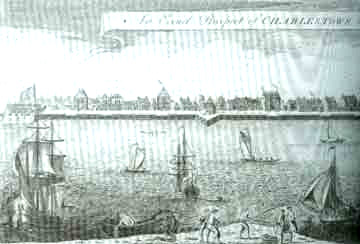SOUTH CAROLINA

In 1663, after the restoration of the British monarchy, King Charles II granted eight of his supporters (known as the “Proprietors”) a charter to settle the land between Virginia and Florida. This area had been Spanish territory. The leader of the group was Lord Shaftesbury, who took clear interest in the territory. Lord Shaftesbury helped craft the Fundamental Constitution of Carolina. Settlement of the Carolina colony began in 1665. Sir John Yeoman led a settlement on the Cape Fear River, near present day Wilmington, North Carolina. Initially, the new proprietors tried to get settlers already in the new world to settle in the colony. However they were not successful. They advertised the land as “a fair and spacious province in the land of America”. The proprietors were able to attract settlers who were looking for a new beginning. In August 1669, three ship set sail with the first settlers aboard. Each family had paid 500 Pounds for their part of the settlement. They founded the settlement of Charlestown, North Carolina. Within two years there were 271 men and 69 women in that settlement.
The harbor in Charleston gave this colony a natural business advantage. As a result, the Carolina settlement was able to promptly begin trade with the West Indies.
The population growth of the Carolina colony was slow. The coastal land was swampy. Many of the early inhabitants came down with malaria. The proprietors of the colony wanted to offer large land holdings to a small number of settlers. This limited the number of settlers and slowed down the overall growth of the colony.
Carolina was a physically large colony. Over time the Northern and Southern portions each began to develop their own sense of identity. Charleston was the seat of government. However, both parts operated more or less independently. Until1691, when Philip Ludwell was appointed governor of both parts. Each part had its own assembly. Though the North has a deputy governor in charge of it. There was turmoil in the Carolina colony between 1706 and 1708. As a result, the colony could not elect any government. Consequently, a further split developed between North and South.
The proprietary rule of the colony was increasingly unpopular. The failure of the colonial government to protect the citizens in the Yamasee (Native American) war resulted in a petition to the British government. The government then revoked the colony’s charter. In the end, the British established separate royal colonies for North and South Carolina in 1719.
As a new Royal Colony, South Carolina encouraged additional settlement, especially inland. Funds were allocated to bring additional settlers. The settlers were encouraged to settle together in groups of a 100. These new enclaves would become parishes. Rapidly, more and more of the inland parts of the colony were settled. By the time of the Revolutionary War nearly half the white population lived in what became known as “the upcountry”. The move inland resulted in a war with the Cherokee Indians. The war lasted for nearly two years. The British sent a regular army force. They eventually defeated the Cherokees.
South Carolina was a religiously diverse colony. It was home to Anglican, Presbyterian, Baptist, and Lutheran and Methodist churches. There was also a Catholic church and Jewish synagogue in Charleston.
.
